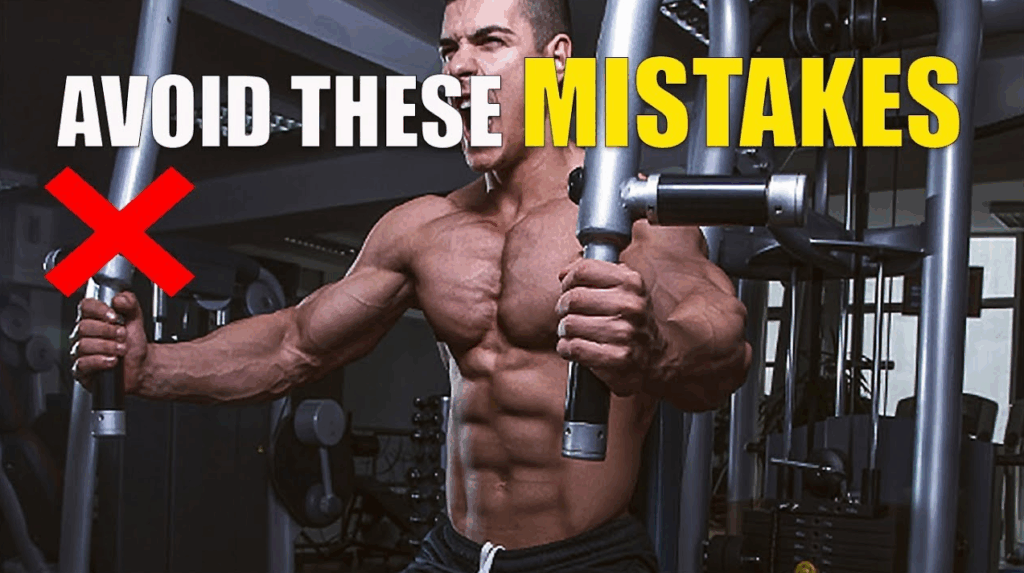The pec deck machine effectively targets your chest muscles when used correctly. Position yourself with your back flat against the pad, feet planted, and elbows at 90 degrees. Avoid common mistakes like using excessive weight, hunching shoulders, or rushing through repetitions. Progress gradually by increasing weight by 5-10% after mastering the current resistance.
For best results, incorporate 3-4 sets of 10-15 reps following compound exercises. The following guide reveals advanced techniques to maximize your chest development.
What Muscles Does the Pec Deck Machine Target?
While primarily known as a chest exercise, the pec deck machine specifically targets your pectoralis major and minor muscles through a controlled fly motion. This horizontal adduction movement engages the entire chest region, with particular emphasis on the sternal (middle and lower) portions of your pectoral muscles.
Unlike compound chest exercises that recruit multiple muscle groups, the pec deck functions as a true chest isolation exercise by limiting the involvement of secondary muscles. You’ll still experience some activation in your anterior deltoids (front shoulders) and biceps, which act as stabilizers during the movement.
However, the machine’s fixed path guarantees your chest does most of the work, making it an excellent choice for developing definition and symmetry across your pectoral region.

Positioning Your Body for Success
Before attempting any weight on the pec deck machine, you’ll need to establish proper positioning to maximize effectiveness and prevent injury. Sit with your back firmly against the pad and adjust the seat height so your shoulders align with the machine’s pivot points. Your feet should be flat on the floor for stability.
For ideal exercise form, position your elbows at a 90-degree angle when gripping the handles or pads. Keep your spine neutral and shoulders retracted throughout the movement. Avoid common mistakes like arching your back or hunching forward, which can strain your shoulders.
Machine adjustment is critical. If handles are too high or low, you’ll engage the wrong muscles. Take time to set up properly before adding significant weight.

What to Avoid When Using the Pec Deck
The incorrect positioning of the pec deck machine by many gym-goers hampers chest development. It is most common to use excessive weight, which causes you to swing your arms instead of controlling the movement. This approach reduces chest activation and endangers shoulder stability.
Watch for the tendency to lift your shoulders toward your ears during the movement. It shifts work away from your pecs and creates unnecessary tension. Another common mistake is rushing through repetitions. When you speed through the exercise, you’ll likely shorten your range of motion and miss the vital inner chest squeeze at peak contraction.
Don’t forget to maintain consistent breathing. Exhale during the contraction and inhale during the return phase to support proper form and maximize results.

How to Safely Increase Resistance
To continue making gains on the pec deck machine after your initial progress, you’ll need to implement progressive overload systematically. Start by increasing weight in small increments of 5-10% when you can complete your target reps with perfect form for two consecutive workouts.
Don’t rush this process. Your chest muscles adapt gradually. Change resistance settings as your body responds, not according to arbitrary timelines. Alternatively, you can create progressive overload by:
- Add 1-2 reps before adding weight.
- Slowing the eccentric phase is important.
- Decreasing rest periods between sets.
- The frequency of training increased from once to twice weekly.
Always choose proper form over heavy weights, as poor technique negates benefits and increases injury risk.
Incorporating the Pec Deck Into Your Chest Training Routine
Placing the pec deck machine strategically in your workout routine can maximize its benefits while complementing your overall chest development. For ideal results, use it after compound movements like bench press or push-ups when your chest muscles are already activated but not completely fatigued.
On chest days, incorporate 3-4 sets of 10-15 reps, adjusting training volume based on your experience and recovery capacity. Lighter weights and fewer sets are best for beginners, while drop sets or supersets may be better for advanced lifters.
Do not rely on the peck deck machine alone. Add free weights to your routine for complete chest development. The machine is best used as a finisher to isolate the pecs after testing them with multi-joint movements.
Frequently Asked Questions
Can the Pec Deck Machine Help Reduce Chest Fat?
No, the pec deck can’t spot-reduce chest fat. It builds muscle beneath fat, but you’ll need overall fat loss through diet and cardio to reveal your pec development. Focus on caloric deficit instead.
Is the Pec Deck Suitable for Beginners or Advanced Lifters Only?
The pec deck is suitable for all fitness levels. If you’re a beginner, start with lightweight and focus on form. Advanced lifters can progressively increase resistance for continued chest development.
How Often Should I Include Pec Deck Exercises in My Routine?
Include the pec deck 1-2 times weekly in your chest routine. You’ll get the best results using it after compound movements like the bench press. Don’t overdo it. Your chest needs time to recover between sessions.
Are There Alternative Exercises if My Gym Doesn’t Have a Pec Deck?
You can substitute dumbbell flyes, cable crossovers, or push-ups with a wide grip. Resistance bands and the butterfly stretch position can also effectively target your chest muscles without a pec deck machine.
Can Women Benefit From Using the Pec Deck Machine?
Yes, you’ll absolutely benefit from the pec deck machine. It helps you develop chest definition, improve posture, and increase upper body strength, regardless of gender. The machine works effectively for everyone’s pectoral muscles.








